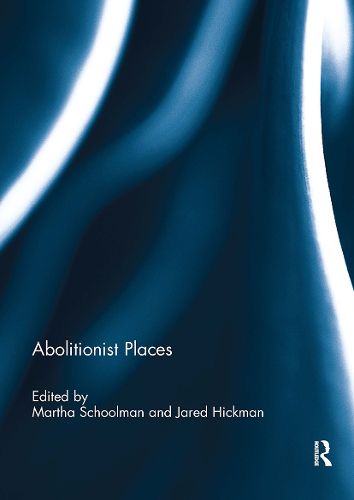Readings Newsletter
Become a Readings Member to make your shopping experience even easier.
Sign in or sign up for free!
You’re not far away from qualifying for FREE standard shipping within Australia
You’ve qualified for FREE standard shipping within Australia
The cart is loading…






From David Brion Davis's The Problem of Slavery in the Age of Revolution to Paul Gilroy's The Black Atlantic, some of the most influential conceptualizations of the Atlantic World have taken the movements of individuals and transnational organizations working to advocate the abolition of slavery as their material basis. This unique, interdisciplinary collection of essays provides diverse new approaches to examining the abolitionist Atlantic. With contributions from an international roster of historians, literary scholars, and specialists in the history of art, this book provides case studies in the connections between abolitionism and material spatial practice in literature, theory, history and memory.
This volume covers a wide range of topics and themes, including the circum-Atlantic itineraries of abolitionist artists and activists; precise locations such as Paris and Chatham, Ontario where abolitionists congregated to speculate over the future of, and hatch emigration plans to, sites in Africa, Latin America and the Caribbean; and the reimagining of abolitionist places in twentieth and twenty-first century literature and public art.
This book was originally published as a special issue of Atlantic Studies.
$9.00 standard shipping within Australia
FREE standard shipping within Australia for orders over $100.00
Express & International shipping calculated at checkout
From David Brion Davis's The Problem of Slavery in the Age of Revolution to Paul Gilroy's The Black Atlantic, some of the most influential conceptualizations of the Atlantic World have taken the movements of individuals and transnational organizations working to advocate the abolition of slavery as their material basis. This unique, interdisciplinary collection of essays provides diverse new approaches to examining the abolitionist Atlantic. With contributions from an international roster of historians, literary scholars, and specialists in the history of art, this book provides case studies in the connections between abolitionism and material spatial practice in literature, theory, history and memory.
This volume covers a wide range of topics and themes, including the circum-Atlantic itineraries of abolitionist artists and activists; precise locations such as Paris and Chatham, Ontario where abolitionists congregated to speculate over the future of, and hatch emigration plans to, sites in Africa, Latin America and the Caribbean; and the reimagining of abolitionist places in twentieth and twenty-first century literature and public art.
This book was originally published as a special issue of Atlantic Studies.